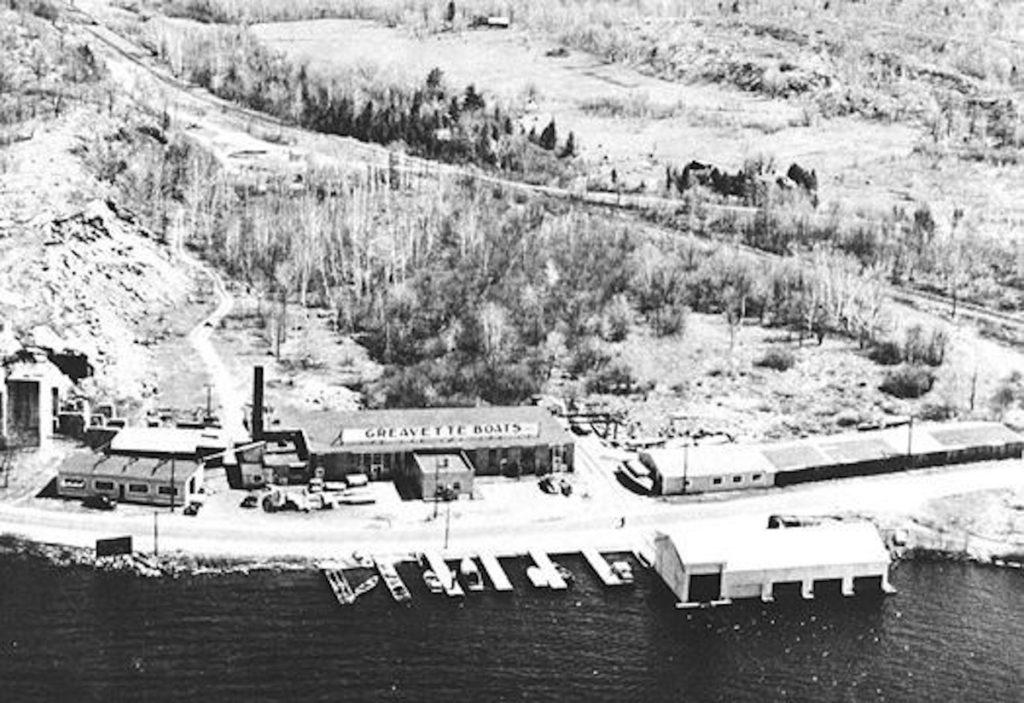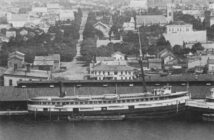Muskoka Part 2- Greavette Boats of Gravenhurst & Hunter Boats of Orillia
In Part One (The Scuba News Canada) of this series, we explained how and why recreational wooden boats first started to be built. We started in the Muskoka Lakes area of Ontario, since this region spawned a vast number of builders, and Ditchburn Boats since they are recognized worldwide to this day as some of the finest wooden pleasure boats ever built.
Greavette Boats of Gravenhurst
As the Great Depression started to gravely affect the sales of Ditchburn boats, Tom Greavette left the company and built what was then a modern boat building facility right around the bay in Gravenhurst, Ontario. The facility sat across the road from the present-day Boston Pizza and with in-water slips where the restaurant now sits. For visitors of Muskoka, the wharf and surrounding area are iconic landmarks.
It was Greavette’s idea to have an assembly line style of production to keep costs lower and retail pricing affordable during those tough years. But even still, sales couldn’t justify the volume of boats being produced, so to survive custom boats were offered. Some of these models with their planning hulls were fast, very fast, and caught on with the gentry who could afford them.
Greavette built the Miss Canada series for racing legend Harold Wilson. One boat in particular, the Miss Canada IV, was acclaimed at one point as the world’s fastest boat and Greavette Boats achieved international attention as a result. In the early 1930’s, Greavette also obtained the rights to build the unique Dispro (Disappearing Propeller) boats, and over the next few decades produced several hundred of these relatively inexpensive almost canoe-like designs with a small motor and a hinged propshaft.
Arguably Greavette’s most gorgeous and coveted model was the 24-foot Streamliner in dual cockpit configuration. But most of all, Greavette built the all-round, all-purpose boats of the times. These were the boat of choice for the cottagers of Muskoka and beyond. Boats like the Sheerliner sedan with a hardtop, flip open windshield, and sliding side cabin windows were the ideal boat for all-weather family outings, picking up groceries, not to mention water skiing.

Greavette Boats managed to survive the Depression years and flourished during the Second World War, at which time it began building larger vessels for the Canadian Government. The post-war years were also heady times for Muskoka fun-seekers, and Greavette benefited greatly. But the death of Tom Greavette in 1958 and the onslaught of low-cost fibreglass boats both contributed to the gradual demise of the company. The empty and rundown factory buildings were finally torn down in the late 1980’s.
We started this series with legendary Ditchburn Boats and continued in this second installment with Greavette Boats, both of which are well known and respected names in the history of wooden pleasure boat building. We are now going to address Hunter Boats of Orillia, a much lesser known name, but to afficionados a highly respected name.
The reason for inclusion of Hunter Boats is that it began building boats in the early 1930’s when Alestair Hunter, a former superintendent at the Ditchburn facility in Orillia, purchased the buildings and equipment when Ditchburn ceased operations. Hunter then began building mostly canoes, and then added his own designs of smaller wooden utility and pleasure boats up to about thirty feet. His boats were regarded as well crafted and solidly constructed.
The Hunter Boats facility was right on the waterfront in Orillia, across from what is now the Royal Canadian Legion at the foot of Mississaga, Orillia’s main street. This same stretch of waterfront was in the early 1900’s home to the most famous J.H. Ross Canoe and Boat Company which revolutionized the designs of canoes and skiffs and won many awards with his designs.
Even though the 1930’s were the Depression years which decimated much of the hospitality industry throughout Canada, including pleasure boat building, Hunter Boats survived on a much smaller scale than predecessor Ditchburn. When war came at the end of the ‘30’s, Hunter’s attention turned almost fulltime to wartime production by building vessels for all three branches of the military. Delivery of these vessels ultimately to the east coast of Canada was facilitated by Hunter Boats’ location on the Trent-Severn Waterway.
The relatively fast 112-foot Fairmile anti-submarine patrol boat became somewhat of a legend in Canadian naval lore and seventy-five were built for the Royal Canadian Navy, of which Hunter Boats built seven including the very first one. It was the only one ever given a name, christened “Mariposa Belle” after Orillia humourist author Stephen Leacock’s famous boat in his novel “Sunshine Sketches of a Little Town.”
Hunter Boats continued successfully after the war years by satisfying the ever-growing leisure needs of mostly local Ontario lovers of watersports. But once again, the rapidly expanding growth of fibreglass pleasure boats gradually took over the market, forcing Hunter Boats to finally close its doors in the mid-1970’s.









1 Comment
Pingback: Before Fibreglass - Central Ontario and Peterborough Boats (Part 5) - Go Scuba Diving Bahamas